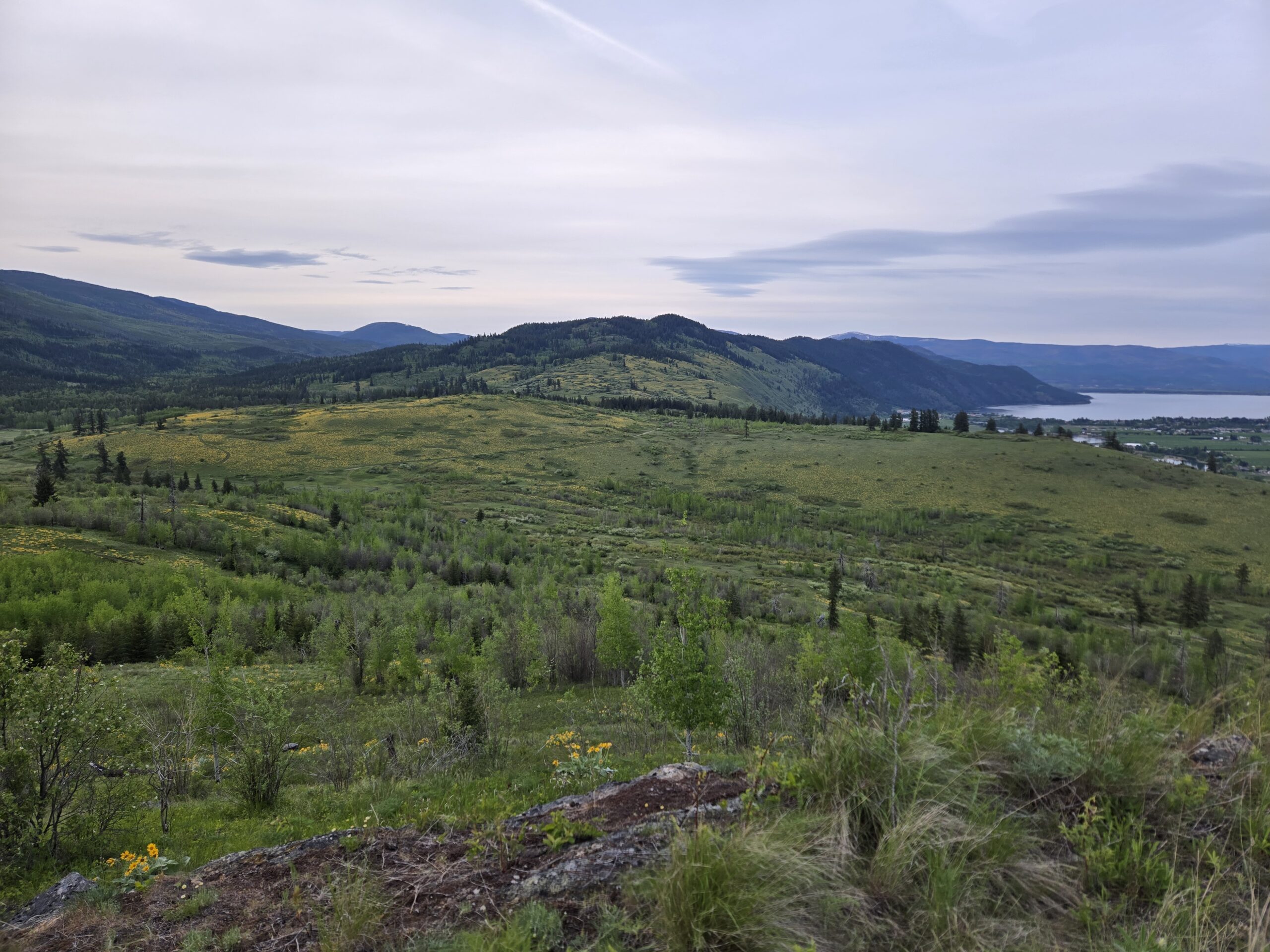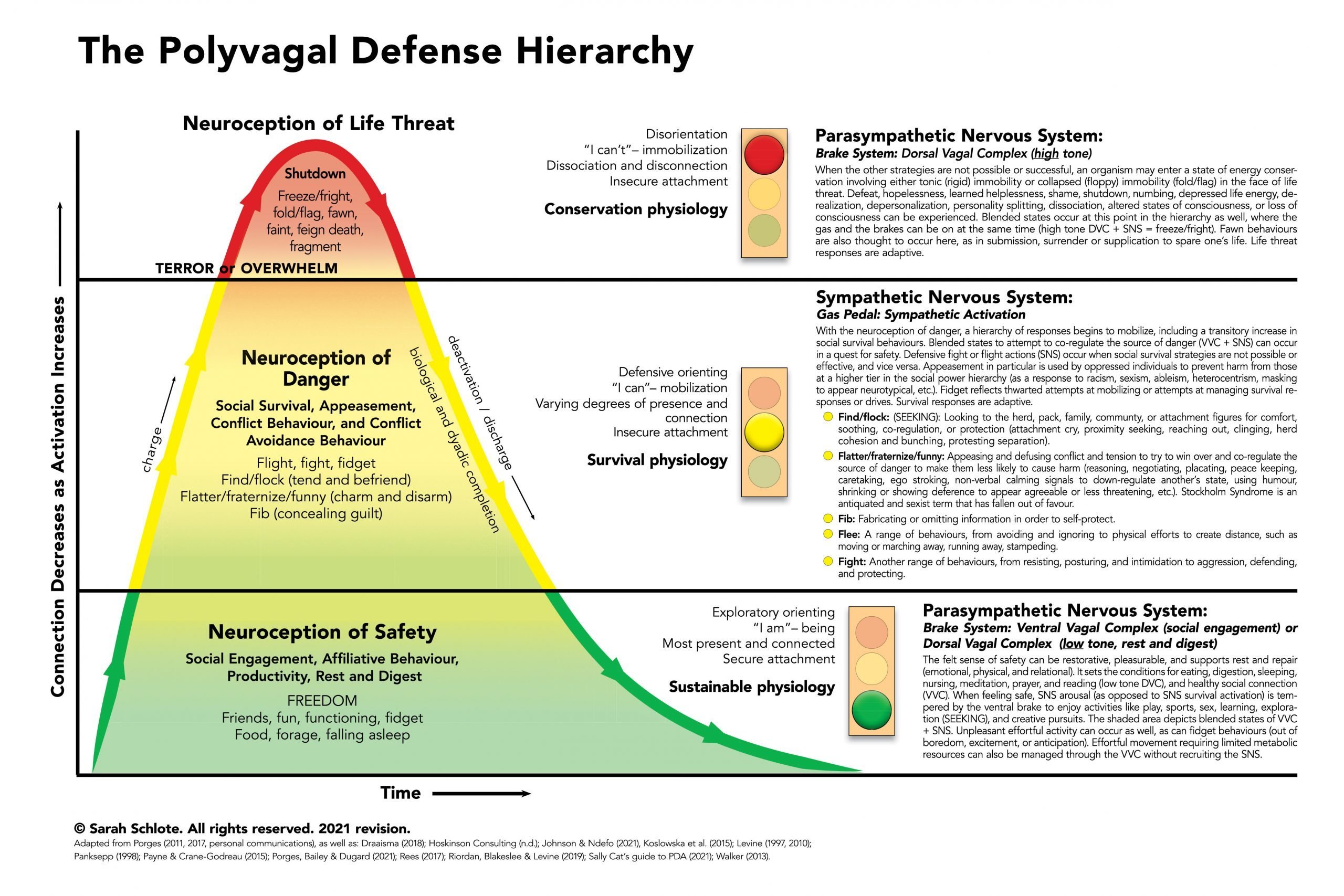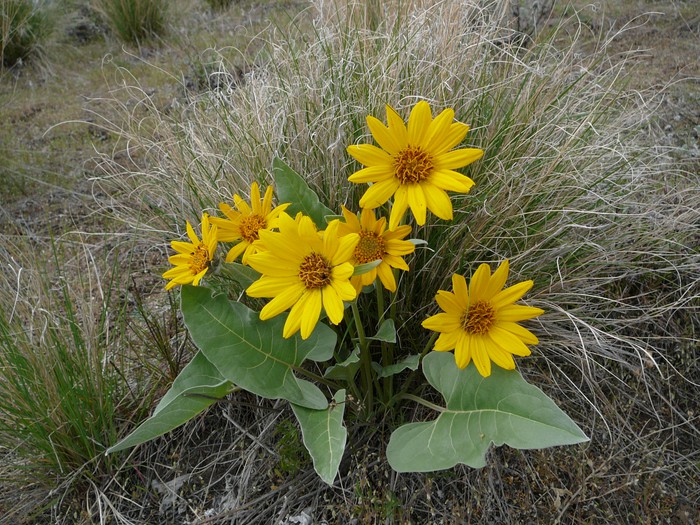
Co-regulating nervous systems and deepening connections
Cw7it ne7élye re tséts’elq.
There’s a lot of Balsam root here
—Secwepemctsín translation
From the crest of a hill, looking towards Little Shuswap Lake, a thick covering of balsam root displays bright yellow flowers. When there is a lot of Balsam root present, it means the overall health of the land is in a good place.
Balsam root are also called mountain sunflowers. Fittingly, this May, Sunflower practitioners came together for our first community of practice gathering. At this meeting, our members explored nervous system activation and regulation through the polyvagal theory developed by Steven Porges.
The polyvagal perspective proposes that we think of trauma in terms of re-tuning the nervous system. To heal ourselves, or to support our client’s healing journey, we should give the “nervous system the cues of safety so that it re-tunes itself to being more homeostatic,” says Porges (via Positive Psychology).
Knowing our own nervous systems
With the polyvagal concepts in mind, we took the time to reflect on how our own nervous systems respond in moments of safety, danger, and life threat. We observed how these changes can affect our needs along a continuum, from connection to protection.
Connection is when we can be in relationship with ourselves and others, listening and responding with patience and care, making decisions and planning with intention. Protection is when we are in survival mode with (often unconscious) responses to the situation, such as withdrawal/disconnection or fighting/mobilizing physically.
It is important for us as community-centred facilitators and holistic therapists to notice our own signs of activation and to tend to our nervous systems. This allows us to be fully present with the people we are working with. Full presence helps us to notice and name when activation is occurring. Then we can access personal and collective resources to bring all of our nervous systems into a place of safety and connection.

Read a text description of this image
An infographic of The Polyvagal Defense Hierarchy with a bell curve that has activation on the vertical axis and time on the horizontal axis. As nervous system activation increases, connection decreases. As activation increases, the response moves from safety to survival mobilization like fight, flight, fidget, flatter. If activation crosses into terror or overwhelm, the response is conservation, such as freeze, fright, faint, or fawn. To shift into safety, the nervous system activation needs to be discharged or released
Open image in new tab | Source: https://equusoma.com/the-ponyvagal-theory-updates-to-the-neuroception-curve/
Nervous system deactivation and grounding
As nervous system activation builds, so does the charge within our bodies. Ironically, our brain functioning decreases to 20% of its capacity. Deactivation, or discharging this energy, is needed to return to a place where we can be in the present moment. This allows us to connect with ourselves and others, navigate tension or conflict, and participate in activities like decision-making, planning, and organizing.
During our community of practice session, our practitioners took turns sharing practices that can support grounding. We “filled a basket” with various anchors that we ourselves use to help regulate our nervous systems.
Practices that were shared included:
- Mantras or affirmations
- Offering gratitude
- Physical movement
- Having sensory anchors present (e.g., images to look at, stones to hold, the fragrance of a candle)
Co-facilitation and co-regulation
A core practice in Sunflower is co-facilitation, where we work jointly with another person, or persons, and share responsibility and collaboration in guiding the process. Our May community of practice sparked a new awareness of how we can weave in co-regulating before sessions and include nervous system reflections during our debriefs.
Perhaps a sign we are in a good place, many of us were doing this in our own way already. It seems so clear now that it is something that we can do together!

Image by Gwen Steele retrieved from: https://okanaganxeriscape.org/db/plant/32
Written by:
Learn more about Sunflower:
Sunflower Facilitation & Counselling Co-op provides online and in person services that are holistic, community centred, and rooted in anti-oppressive practices.
